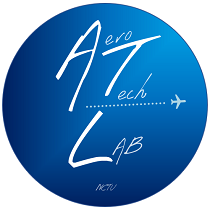Introduction
Due to the population explosion of the current era, energy issue has become increasingly critical. Under the increasing demand on energy and the fast consumption of non-renewable fossil fuels, researchers and engineers start to focus on developing green energy technology. Our work is focused on developing and optimizing the Hydrodynamic VIV (vortex induced vibration) resonance energy harvester device which can harvest the continuous and almost zero carbon emission (air or water) flow energy.
By matching the device’s natural frequency with the shedding frequency of von Karman vortex street, intensive power can be generated by resonant. To increase the efficiency of the device, we start with the development of an efficient CFD (computational fluid dynamic) procedure and precise experimental setup to help us identify important device parameters.
Experiment setup
This experiment mainly conducted in the water channel in our laboratory. In the meantime, we conduct flow visualization with PIV, and observe the correlation between the VIV phenomenon in the flow field and different experimental models
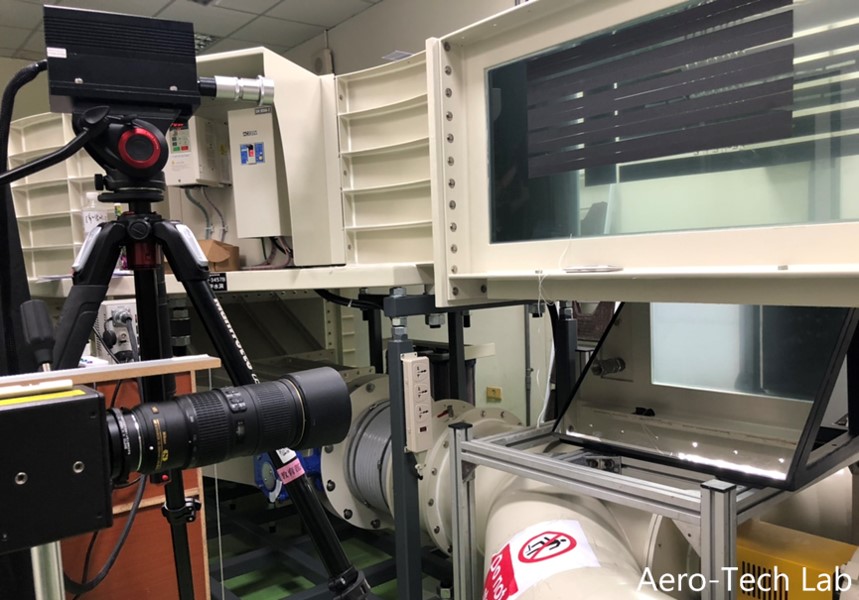
Particle image velocimetry (PIV) system
The PIV system consists of three parts.
The first part is distributing particles with density similar to that of water into the water channel. The particles move with the flow and eventually the whole flow field is filled with particles.
The second part is setting up the 2 W continuous green laser, and form a sheet laser to illuminate the flow field.
The third part is using a high-speed camera to capture the light reflected by particles and conducting PIV processing and analysis.
- Particles

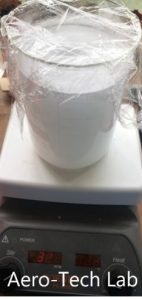
2. Laser
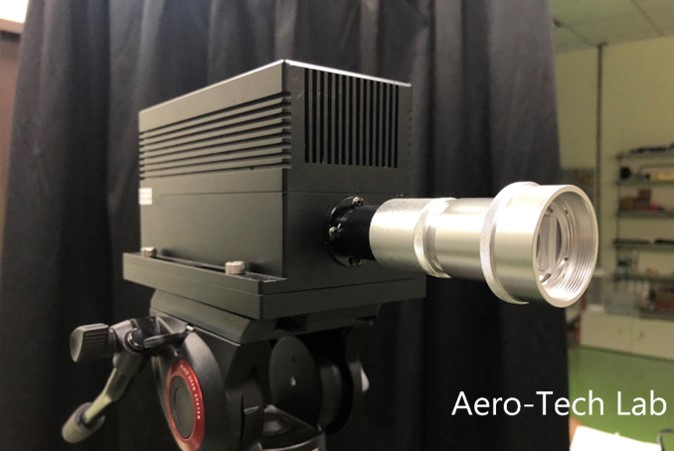
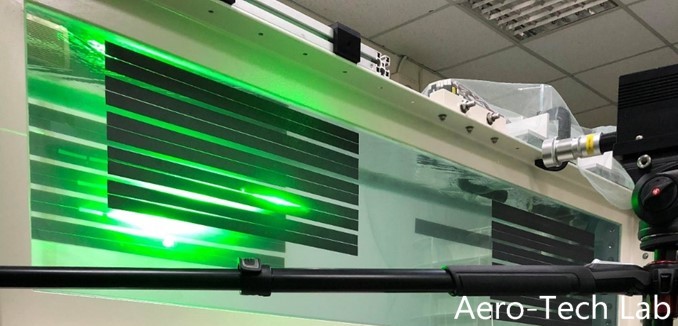
3. High speed camera- FASTCAM Mini UX50
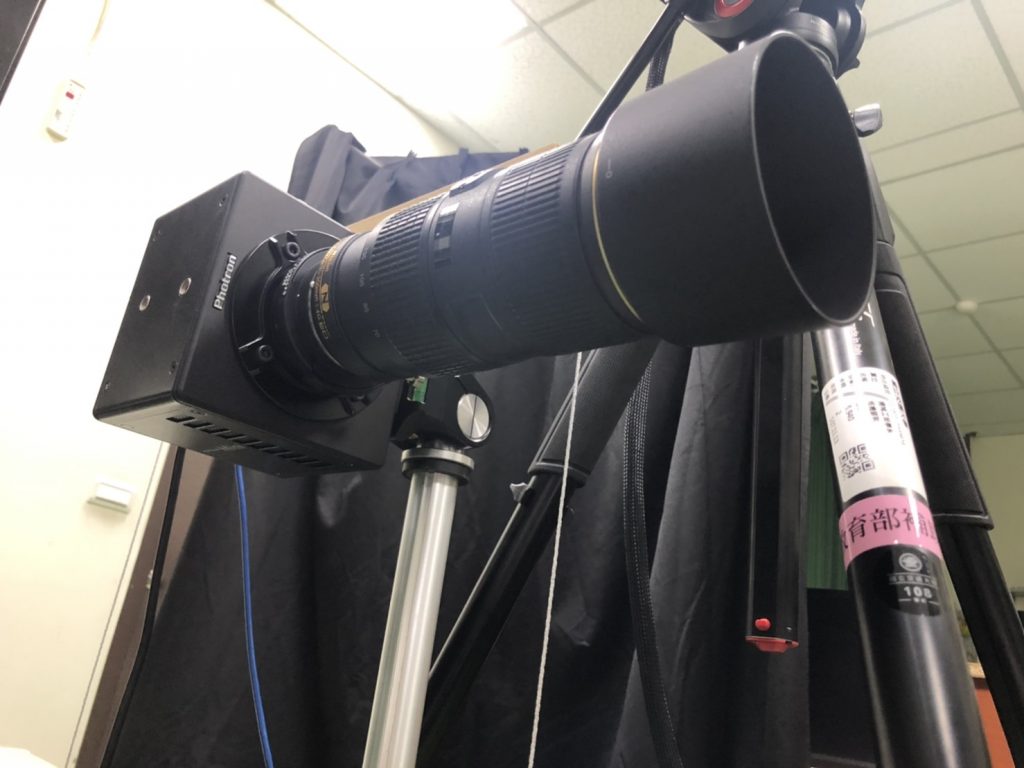
Experimental model design and flow pattern.
Building the experimental model virtually in SolidWorks, and designing a slide rail mechanism that is able to disassemble and assemble the model easily, greatly reduce the time required for setting up the experiments, while providing great flexibility for the future adjustment of experimental parameters, facilitate the study of model array in the future.
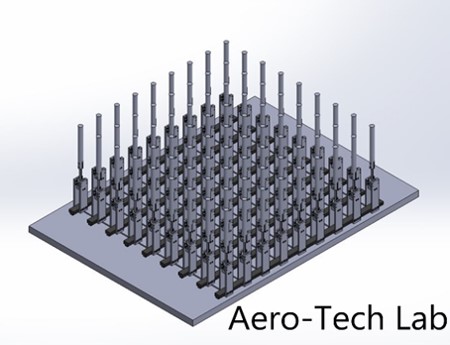
We use Ansys-Fluent simulation software for the simulation of the flow field. We mainly apply dynamic grid analysis techniques and write user-defined functions by ourselves to successfully simulate the vibration of a single cylinder.
▲ VIV simulation
In the experimental part, in order to capture the flow field around the cylinder, we apply PIV technique. First add particles into the flow field and the particles move together with the flow, and then use the laser to shine on the flow field laterally. With the particles’ reflection, a high-speed camera is used to capture the flow field. Below left is one of the flow filed images captured by the camera. When we have a pair of photos captured within a very short period, the velocity and vorticity fields can be deduced. Below right is the velocity and vorticity fields deduced from a pair of images.
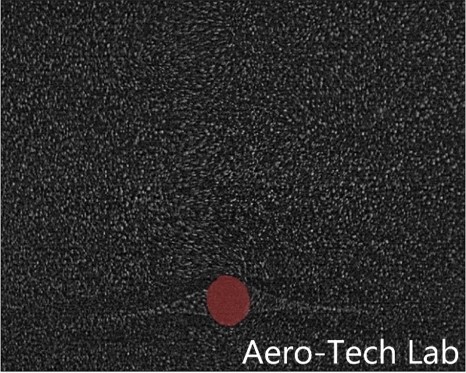
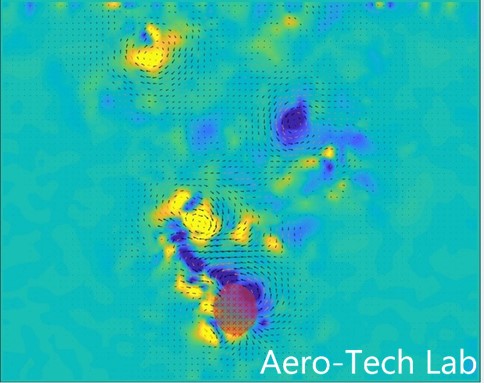
Crruent results
As the results of simulation and experiment on the flow fields of a single cylinder are consistent, we are currently conducting experiment on cylinder array.
Future works
After conducting a series of experiments and simulations to analyze the VIV phenomenon, we understand the interaction between the flow field structure and the fluid structure interaction clearly, and are able to provide background knowledge for the development of this kind of advanced energy generation technique.
